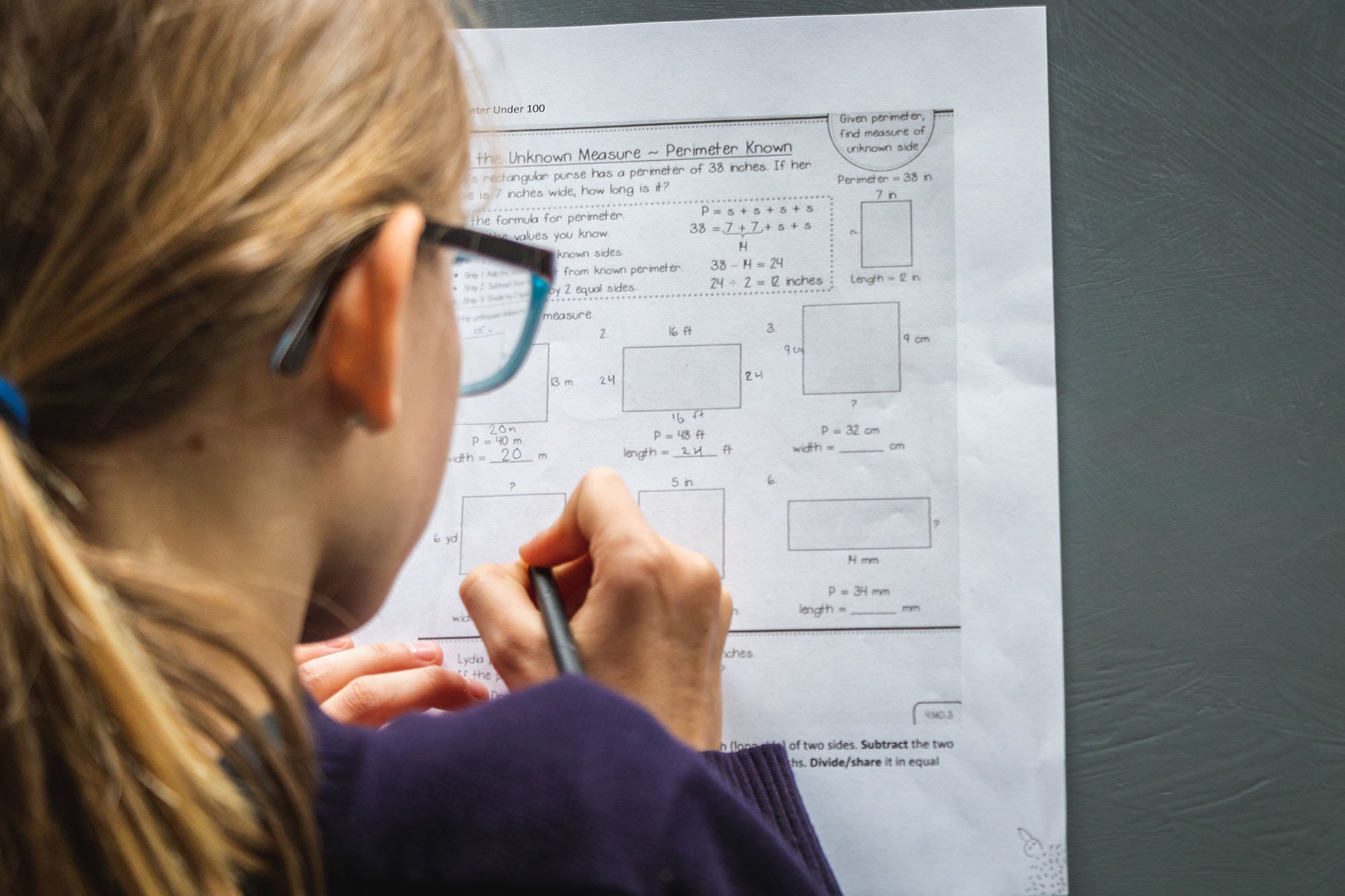 The thing about math is that when it makes sense it’s easy. Most tutoring of course is aimed at making the math make sense in the first place. However, for kids who find the math in school to be too simple and too straightforward, the lack of challenge and novelty can become frustrating and even demotivating. For any student, the goal is for the learning to be appropriately challenging, and that requires flexibility, creativity, and skillful teacher judgment.
The thing about math is that when it makes sense it’s easy. Most tutoring of course is aimed at making the math make sense in the first place. However, for kids who find the math in school to be too simple and too straightforward, the lack of challenge and novelty can become frustrating and even demotivating. For any student, the goal is for the learning to be appropriately challenging, and that requires flexibility, creativity, and skillful teacher judgment.
One simple response is to engage a private tutor to teach this advanced student more: more topics, more knowledge, more concepts. While it’s undoubtedly fun to forge ahead and discover new ideas and new concepts, the “more is more” approach sometimes helps to create the very problem you’re trying to avoid.
Therefore, rather than actively trying to extend your child’s knowledge, it’s more useful to broaden it and deepen it, which really translates to developing the mental flexibility to see how to apply this knowledge to a wide variety of problems. And this endeavor, in fact, is the purest reason for why it’s really worth getting involved in math competitions.
Math competitions take concepts familiar to students of a certain grade and present them in quirky, new and unfamiliar ways that force the student to explore the meaning and implications of these concepts. As the student examines ideas from different angles, they develop greater flexibility of thought, combined with greater creativity and inventiveness. Processing an unfamiliar situation and getting comfortable enough with it to come up with a strategy to deal with it is not just a desirable academic outcome but is surely the ultimate dream of any parent who wants to prepare their child for all the unforeseen challenges that life will inevitably throw at them. The value in education, and the greatest gift that parents can endow on their children, is preparing them to be able to solve the problems that they are going to encounter on a daily basis in high school, in college, in the workplace and in their everyday lives. Since we cannot know ahead of time what those problems will be, it makes sense to develop a general talent for handling problems. Teaching often emphasizes knowledge and facts, which remain important; but the real value lies in learning to take that knowledge and do something with it.
Math competitions give students a purpose and a goal, something to work towards and to work for. It is a common refrain among kids who aren’t enjoying their work to wonder “what is this for?” because it is not obvious what value they’re getting out of it. Math competitions not only provide that motivation, but they also create an environment of collaboration and exploration, not to mention the camaraderie and society of other motivated students who can share their passions, their curiosities and their friendship.
There are more prosaic reasons, however, for the more pragmatically-minded parent. Math competitions are without question excellent preparation for the ACT or SAT tests, which remain strategically advantageous to submit when applying to college. These all-important tests frequently derail even the best students, not because they are hard – far from it – but rather because they present familiar and basic concepts in an unfamiliar and complicated way. The challenge of the SAT or ACT lies in being able to untangle the superficial complexity of the problems and recognize the simple sense that lies beneath them, which is exactly what math competitions do, too.
Compare these questions from an ACT test and an AMC-8 problem set:
There is a list of seven numbers. The average of the first four numbers is 5, and the average of the last four numbers is 8. If the average of all seven numbers is 6, then the number common to both sets of four numbers is…?
To increase the mean [average] of 7 numbers by 3, by how much would the sum of the 7 numbers have to increase?
Both these questions coincidentally happen to involve lists of seven numbers. More significantly, both rely on an appreciation that the average of a group of numbers is directly tied to the total of that group of numbers. So in the first question, to allow the average to be 6, the total of all seven numbers must be 46 (i.e. 6 x 7), while the total of the first four numbers must be 20 (5 x 4) and the total of the last four numbers must be 32 (8 x 4). Since the first four numbers and the last four numbers add up to 52 (20+32), while the total of all seven numbers is 46, that difference of 6 (52-46) must be the value of the ‘extra’ eighth number that is common to both sets of four numbers – as the question requires. In the second question we do not know what the original average is, but from the wording of the question it’s clear that it doesn’t really matter: the answer would be true for any scenario that fitted the description. Thus, if the original mean average was – for sake of example – 2, meaning that the total of all seven numbers originally was 14 (2×7), then the bigger mean average after the increase of three would be 5, and an average of 5 would come from the seven numbers having a total value of 35 (5×7). We can conclude that the total had to go up from the original total of 14 to the new total of 35 by an increase of 21.
The math involved in these solutions is teachable, but the number-crunching is not the important point here. The important point is that the first question comes from a math competition aimed at 8th graders, while the very similar second question comes from an ACT math question typically handled by 11th graders. Developing the mental flexibility and ease to deal with these questions in the 8th grade would clearly not only help attain a great GPA in regular schooling, but would also mean that by the time the ACT or SAT testing comes along, your child is already in a great position to do well, which frees them up to concentrate on regular schoolwork which is more demanding and time-consuming by the 11th grade; it also leaves them with more time for those extracurricular activities that enrich their lives and differentiate their high school experience.
If that isn’t enough, then it’s worth considering that if your child is particularly invested in math competitions and turns in a noteworthy score, it’s this sort of accomplishment that is a real standout accolade for a student. The accomplishment boosts a student’s confidence, and it’s a data point that exceeds any classroom expectations and validates strong math achievement. From a college application perspective, it’s the type of accomplishment that adds extra clout and sends the message that the student is not only talented but also motivated and invested: exactly the kind of person that colleges are seeking to take on.
Ultimately, however, math competitions are a risk-free way to add value, fun and intrigue to your child’s academic life. They can challenge themselves, and make like-minded friends, all while discovering the playful and creative side of problem-solving that is often lost in day-to-day schooling. Meanwhile, if the results of the competition aren’t great, then it makes no difference to your child’s academic record, so there’s no downside; but if the results are good then it can only be an advantage for many years to come.
By Nick Thomas, Private Tutor and Math Specialist
